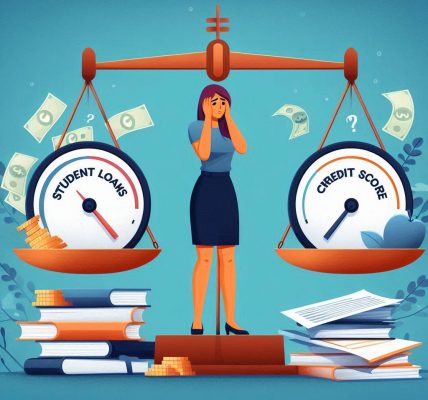Introduction
Financial hardships, such as job loss, medical emergencies, or overwhelming debt, can have a significant impact on your credit score. A low credit score can make it challenging to secure loans, rent an apartment, or even get a job in some cases. However, rebuilding your credit is possible with patience, discipline, and the right strategies.
In this DIY guide, we will explore actionable steps to restore your credit score after a financial setback, ensuring a brighter financial future.
Understanding the Impact of Financial Hardship on Credit
When you face financial difficulties, it’s common to struggle with late payments, high credit utilization, or even defaulting on loans. These factors can negatively impact your credit score, making it harder to regain financial stability. The key to rebuilding your credit is to identify what went wrong and implement strategies to fix it.
Common Factors That Hurt Your Credit Score:
- Late or missed payments – Payment history accounts for 35% of your credit score.
- High credit utilization – Using more than 30% of your available credit can hurt your score.
- Defaulted loans or accounts in collections – Unpaid debts significantly damage credit scores.
- Bankruptcy or foreclosure – These can stay on your credit report for up to 10 years.
- Frequent credit inquiries – Too many hard inquiries in a short time can lower your score.
Step-by-Step Guide to Rebuilding Your Credit
1. Check Your Credit Report
The first step in rebuilding your credit is understanding your current standing. Request a free copy of your credit report from major credit bureaus (Experian, Equifax, and TransUnion) to:
- Identify errors or inaccuracies.
- Determine negative factors affecting your score.
- Plan corrective actions.
If you find errors, dispute them immediately with the credit bureau to have them corrected.
2. Pay Bills on Time
Since payment history is the most significant factor in your credit score, making timely payments is crucial.
How to ensure on-time payments: ✅ Set up automatic payments or reminders. ✅ Pay at least the minimum amount due to avoid late fees. ✅ Prioritize essential bills like credit cards, loans, and utilities.
3. Reduce Credit Card Debt
Lowering your credit utilization ratio (the amount of credit used vs. your total credit limit) can have a major positive impact on your credit score.
Strategies to reduce credit card debt:
- Pay more than the minimum payment each month.
- Focus on high-interest debts first (debt avalanche method) or pay off small balances to stay motivated (debt snowball method).
- Avoid using credit cards for non-essential purchases.
4. Build Positive Credit History
If you have a damaged credit score, you need to create a history of responsible credit use.
Ways to establish positive credit history:
- Use a secured credit card – These require a deposit and help build credit responsibly.
- Become an authorized user – Ask a trusted family member to add you to their credit card.
- Take a credit-builder loan – These loans are designed to help rebuild credit over time.
- Use credit responsibly – Keep balances low and pay off charges in full each month.
5. Keep Old Accounts Open
The length of your credit history affects your score. If you close old accounts, it can shorten your credit age and reduce your total credit limit.
- Keep older credit accounts open and in good standing.
- Use them occasionally to keep them active without accumulating debt.
6. Limit New Credit Applications
Each time you apply for a loan or credit card, a hard inquiry is made on your credit report, which can lower your score.
- Apply for new credit only when necessary.
- Space out applications to avoid multiple inquiries in a short period.
7. Negotiate with Creditors
If you’re struggling to make payments, communicate with your creditors before defaulting.
- Request a lower interest rate or payment plan.
- Ask for late payment forgiveness if you have a good payment history.
- Consider debt settlement or consolidation for better repayment options.
8. Diversify Your Credit Mix
Having different types of credit (credit cards, installment loans, etc.) can improve your score over time.
- If you only have credit cards, consider a small personal or car loan to add variety.
- Ensure responsible borrowing to avoid falling into debt again.
9. Monitor Your Credit Regularly
Tracking your progress helps you stay on top of your credit-building efforts.
- Use free credit monitoring services.
- Check your credit report for errors at least once a year.
- Adjust your financial habits based on your credit score improvements.
10. Stay Patient and Consistent
Rebuilding credit doesn’t happen overnight. It takes time, discipline, and consistency. Stick to good financial habits, and you’ll gradually see improvement.
How Long Does It Take to Rebuild Credit?
The time required to rebuild your credit depends on the severity of your past financial hardship.
- Late payments may take 6 months to 2 years to recover from.
- Collections and charge-offs may impact your credit for 7 years but lessen over time.
- Bankruptcy can take 7-10 years to disappear from your report, but responsible credit use can improve your score much sooner.
Final Thoughts
Rebuilding your credit after financial hardship is entirely possible with the right approach. By paying bills on time, reducing debt, using credit wisely, and staying patient, you can regain financial stability and improve your creditworthiness.
Remember, your credit score doesn’t define you—it’s just a financial tool that you have the power to rebuild and strengthen over time. Take control of your credit journey today and work towards a brighter financial future!




